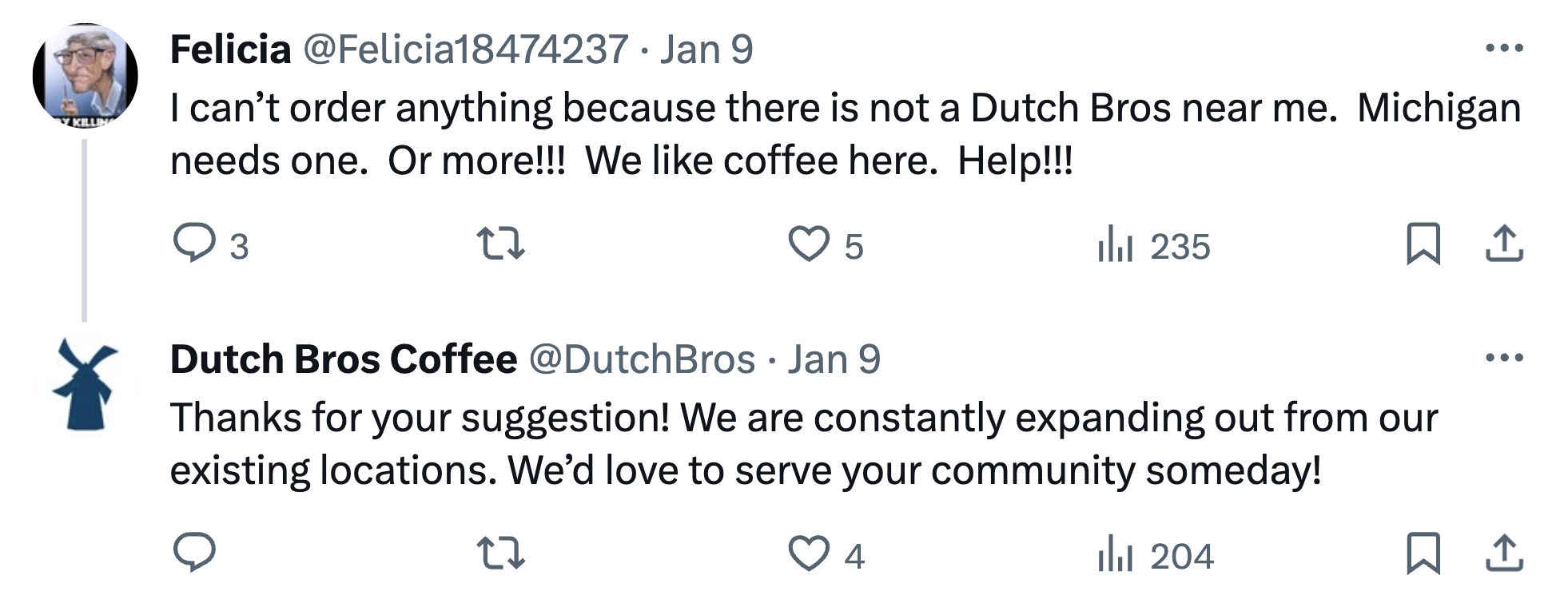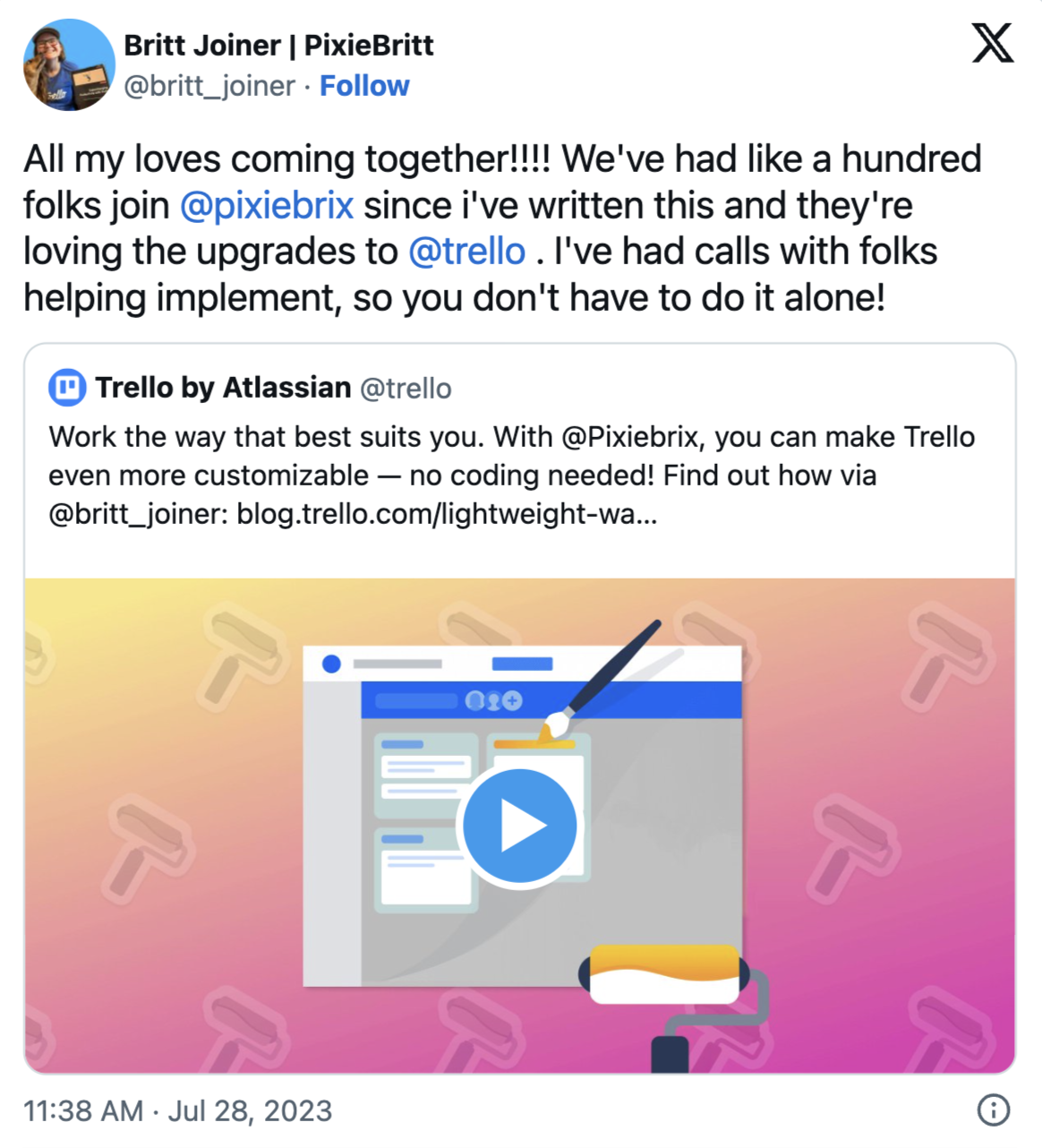Most marketing professionals constantly grapple with two questions: What do our customers actually want and how can we turn them into our biggest champions?
Without a deep understanding of their audience, even the most seasoned marketers, at times, find themselves in a cycle of guesswork and reactive strategies. The risk isn’t just a misalignment with customer expectations but also the missed opportunity to cultivate brand loyalty and advocacy.
Social listening plays a vital role in this area. Tapping into social media conversations points to customer insights that go beyond surface-level metrics and unearth the real needs, desires and pain points of your audience. And when you apply this knowledge, you turn customers into fans and fans into vocal advocates.
In this article, we explain how you can use social listening to increase customer advocacy and, in doing so, level up your brand.
What social listening can tell you about your customers (present and future)
Mining through social listening insights pinpoints tangible ways to improve the customer experience and create tailored marketing strategies.
Here’s how.
Social listening decodes the nuanced language of your customers and reveals what delights, frustrates and motivates them. It also captures real-time, unfiltered perspectives on your brand, the wider industry and competitors. This qualitative social data reveals customer sentiments, preferences and experiences.
Applying these insights impacts your business strategy in two ways:
1. It helps you earn more customers
Earning new customers involves understanding and responding to their needs. Sentiment analysis and trend forecasting from social listening unlocks the potential to not only meet these needs but to anticipate them by helping you:
- Understand consumer preferences: Granular insights into customer behavior patterns and psychographics reveal customer preferences. Coffee brand Dutch Bros, for example, employed a clever way to ask customers what their favorite product was. The brand can use the responses to highlight popular products in their promotions or develop new variations to meet emerging tastes.

- Spot market opportunities: Feedback about desired products or services, like location requests, unveils new market opportunities and guides expansion strategies. For example, a customer who participated in the Dutch Bros’ conversation complained about the brand not being present in Michigan. If other customers share the sentiment, it gives the brand ideas on where to potentially expand next.

- Identify trends: Social listening pinpoints changing preferences and emerging trends. Say Dutch Bros notices an uptick in conversations around sustainability where customers are concerned about how their coffee is sourced and its impact on the environment. This insight can steer future product development or marketing strategies.
2. You create loyalty from the start
Once you attract new customers, the next step is to increase retention and loyalty. Social listening is transformative here as it creates a strong foundation for long-term customer relationships. It does so by helping you:
- Cultivate brand advocates: Engaging with users who already show a positive inclination highlights potential players for customer advocacy. If Dutch Bros notices a customer who frequently mentions their coffee in a positive light, the brand can engage these advocates with targeted outreach. They can invite them to share their experiences or offer exclusive previews of new products to increase brand loyalty and reach.
- Engage in proactive product development: Anticipating and addressing future market demands based on social listening insights improves loyalty with existing customers. Dutch Coffee Bros may notice a growing interest in unique flavor profiles and can use this data to innovate their product line and build a strong connection with existing and potential new market segments.
This way, social listening can increase customer advocacy by helping you meet new customer needs and build enduring loyalty from the outset.
What is customer advocacy?
Customer advocacy nurtures satisfied customers into trusted champions who voluntarily promote and support a brand. This is helpful because people trust people more than traditional, self-centered advertising. When a friend raves about a new skincare product or a family member recommends a car mechanic, we listen.
The 2023 Sprout Social Index™ also indicates a customer desire for more authentic, non-promotional content from brands. And because customer and brand advocacy are built on relatable stories, inspiring customers to share their own stories and genuine experiences, they further build brand trust.
For example, Brittany Joiner, a long-time user of Trello, is also a customer advocate who’s turned into a natural influencer for the brand. Her YouTube channel and newsletter provide tips on how to use the tool. And now, Trello frequently collaborates with her to create content for their brand channels too.

This is a powerful recommendation for Trello because it’s a personal endorsement. Customer advocates like Brittany use their social platforms to provide insights, share experiences and highlight the brand’s strengths in a way that feels real and relatable.
Customer advocates also understand the nuances and specific needs that resonate with your customer base. They’re the most authentic influencers you can find—they already know the ins and outs of your products and services and have a genuine relationship with your brand.
This approach creates a level of connection and trust that traditional marketing methods can’t easily replicate.
How social listening turns loyal customers into advocates
Actionable responses to what you hear on the social media grapevine inspire loyal customers to advocate for your brand.
Suppose Microsoft notices a trend in complaints about Outlook’s new font. Social listening can help them learn if it’s an isolated post or requires deeper investigation.

Microsoft can respond and develop comprehensive, interactive digital guides based on these insights to make it easier for all users to navigate the change. This proactive approach does two things: it solves the problem for current (and future) users and demonstrates that Microsoft values user feedback.
Apart from using social listening to increase customer advocacy with product training and helpful documentation, brands can also use social listening for product suggestions and improvements.
For example, productivity and note-taking app Notion’s new Calendar feature faced user access issues due to authorization errors.

Tuning into the social media conversation helped Notion act on customer feedback and work on their product issues. This kind of responsiveness can transform a regular customer into a brand champion.
When customers see their feedback leading to tangible changes, it builds trust and ownership in the brand’s evolution and drives brand advocacy.
5 ways to improve your social listening and foster customer advocacy
Social listening isn’t just about tracking hashtags or counting likes. It’s a strategic tool that changes how you connect with your customers. To find the best insights, you need to implement social listening strategically, though. So here are five ways to improve your social listening to increase customer advocacy.
Set a regular cadence to explore social listening
Regularly tuning into social media conversations ensures you’re always in the loop with what your audience is saying. Do this in two ways:
- First, teams should mark their calendars to set up a regular cadence for consistent social listening sessions. This kind of regular listening allows you to spot trends, understand shifts in customer sentiment and also predict future needs.
- Second, plan to increase the frequency of your social listening during key moments for your brand. For example, if you’re launching a new product, ramp up your social listening and broaden your searches to capture more of the industry conversation beyond just your tagged brand mentions. Doing so will help you catch immediate reactions, see mentions you aren’t tagged in and address any concerns quickly. Looking at the industry more broadly also helps you gauge overall brand awareness and perception.
This proactive approach during high-stakes periods shows you’re not just seeking feedback but are committed to making your customer experience as positive as possible. It’s this kind of attentiveness that ensures social listening increases customer advocacy and uncovers opportunities to convert satisfied customers into passionate advocates.
Jump into industry conversations proactively
Participate in industry conversations on platforms like X (formerly known as Twitter) and Reddit to stay in tune with key demographics. Reddit, in particular, is especially valuable for unfiltered, candid feedback.
Industry intelligence gives you a window into your audience’s core preferences and perceptions. It’s a direct insight into what makes them tick and answers three critical questions, which are:
- How can you keep a pulse on your key demographics to help craft your messages?
- How do you find the influencers in your industry to help you broadcast your messages?
- How can you figure out the best products and content to create and share?
Here’s a real-life social media listening example from our X account. A user asked for alternatives to Buffer and another user weighed in, praising Sprout Social. Our team joined the conversation by thanking the advocate and offering the inquiring user a chance to try Sprout for free for 30 days.

This is proactive social listening in action. It reveals what customers appreciate about our product. It can also help us identify a customer advocate who could potentially be a nano-influencer. For example, this customer already uses our product (and loves it) and has a following on X, too.
Listening enables you to connect with people who have a relationship with your brand and already have an active and engaged audience.
Create reports to surface findings to the company
Creating reports to communicate social’s impact connects conversational data to your overarching business strategy.
The 2023 State of Social Media from Sprout highlights that about 3 in 4 business leaders find it challenging to see how social media impacts the bottom line. Targeted and concise reporting can make this connection crystal clear.
The crux is to link social media outcomes with key business goals such as increasing brand awareness or improving customer satisfaction. Next, use a mix of quantitative and qualitative social media metrics like engagement rate, share of voice or customer sentiment trends to understand social’s impact.
Social listening tools like Sprout consolidate listening data from multiple sources, making it easier to present a comprehensive picture to your leaders.
Suppose the Sentiment Summary on your Listening dashboard highlights an increase in negative sentiment following a product release or brand campaign. You can dial in further to pinpoint what’s causing the decrease, viewing words and phrases that continue to pop up in conversations with the Word Cloud feature.


Analyze recurring themes or keywords (like matcha in the above image) and dig into brand and industry conversations. Then, you can learn what’s causing the recent uptick in negative sentiment. Now, armed with both data and context, create a targeted report for your company leaders.
Thus, when you connect business goals to social data, you demonstrate the tangible value of how social listening impacts your company and customers. This, in turn, translates into building a case for further investment in social to keep these vital brand conversations going and turn more customers into advocates.
Work cross-departmentally to come up with new listening topics
Social listening isn’t just limited to what people say about your brand and product (that’s brand intelligence)—it also includes industry and competitive intelligence, which is gold for other departments.
It provides a treasure trove of info for marketing, customer support, sales, research and development, product packaging, human resources and public relations.
Here’s how you can encourage cross-departmental collaboration:
- Encourage each department to contribute unique data sources—like customer service logs, sales data or market research—to enrich social listening insights.
- Schedule consistent meetings with relevant departments to share insights, brainstorm and identify common themes.
- Establish a process where findings from social listening are regularly fed back into each department.
Then, plug these keywords into Sprout’s Query Builder to get alerts whenever someone mentions these topics on social media.

Setting up targeted alerts with insights from across the business transforms social media from a mere communication channel into a business tool that builds stronger customer relationships.
Conduct competitive benchmarking
Conduct competitive benchmarking to get deep insights into industry best practices, audience resonance and strategic adjustments to differentiate your brand. Begin by gathering conducting competitive intelligence because it answers three key questions:
- Who your biggest competitors on social media are and how much of the message you own
- How your competitors’ social followers feel about them and how you can use that data
- What kinds of campaigns and content strategies do your competitors use and how you can differentiate yourself
Identify top trends, topics and posts in your industry with Sprout’s Listening insights and filter them by competitor, content type, message type and sentiment. As you listen to the sentiments expressed about your competitors, identify if customers are complaining about certain competitor features and position your brand as a solution to these pain points.
But it’s not just about capitalizing on your competitors’ weaknesses. Understanding their strengths gives you a chance to improve the customer experience too.
In a recent webinar hosted in The Arboretum, Sprout’s virtual community for marketing professionals, we discussed how to leverage conversations for connection and conversion. The webinar highlighted a case study where a financial brand lagged behind competitors in overdraft protection. Analysis revealed that 80% of negative feedback was due to a lack of communication about overdraft unavailability during these downtimes.

This insight led to a strategic shift: the brand developed a superior overdraft program with extended grace periods and coverage during downtimes, outperforming competitors’ offerings.
A proactive approach not only differentiated them tactically but also attracted customers from competitors, significantly enhancing their market position. Social listening was vital to identifying specific customer complaints and directly addressing them.
The brand not only resolves immediate issues but also shows a commitment to customer satisfaction. This attentive approach converts frustrated customers into loyal advocates who feel valued and heard and are more likely to share their positive experiences with others.
Amplify customer advocacy through attentive listening
The best way to build a relationship is by showing you listen and you care. Social listening increases customer advocacy by bringing your ears closer to the heartbeat of your customers. Actively participating in conversations, acknowledging concerns and celebrating successes alongside your customers paves the way for genuine connections and turns casual followers into committed brand advocates.
Convert customer conversation into your brand’s superpower. Check out our social listening guide to understand the nuances of customer sentiment and respond in a way that resonates.